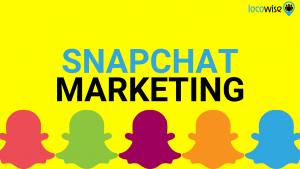Anyone involved in a business with a digital presence (i.e. anyone in business these days) has doubtlessly come across the terms SEO and SEM. Nevertheless, I’ve found that the average person’s knowledge in these areas is limited.
To begin, let’s unfurl the acronyms. SEO stands for Search Engine Optimization and SEM stands for Search Engine Marketing. While at first glance these terms may be seem intimidating or technically complex, there is no reason to panic. If you’ve ever used a search engine then you are capable of grasping the fundamentals and understanding how SEO and SEM can be used to benefit your business.
Both SEO and SEM are vital to achieving a high-visibility web presence, and both have unique advantages and disadvantages.
How SEO and SEM Relate to Each Other
SEM refers to any and all marketing practices geared towards achieving a greater presence for your digital content in a search engine (Google, Yahoo, Bing). For the sake of our discussion we will use Google as a stand in representative for all search engines, as most SEM and SEO practices are in most cases strategically focused on Google due it’s dominant status as the preferred search engine of most users.
SEO falls under the domain of SEM, i.e., it is digital marketing practice whereby certain tactics are implemented to web content as to achieve a higher ranking in search engine result pages (SERPs).
In addition to SEO, SEM includes other marketing methods that aim to gain greater visibility in search engines, most notably paid search advertising. When most people speak of SEM, they are usually referencing paid search advertising specifically.
SEM: Brief Overview of Concepts
The results for a query in Google will yield pages upon pages of results. When examining those results, you will notice that at the top of the SERPs, some of the results will contain a little box next to them containing the word “Ad.” These are paid search ads that companies pay for using digital ad platforms, the famous of which is Google’s Adwords.
Ads can be purchased under various models. Search Engine Land breaks these down below:
- PPC (pay-per-click) – ads charged by the number of clicks the ad receives
- CPM (cost-per-thousand-impressions) – you pay an ad rate for 1000 impressions
PPC advertising with Adwords involves businesses bidding on popular keywords that their audience uses as search queries in the hope of converting those interested users into consumers of your product or content. PPC advertising involves a great deal of strategy and analytic study that goes beyond the breadth of this article. But briefly, the primary goal is to pay the lowest rate for cost per click (CPC). To achieve the lowest CPC for your PPC requires analysis of online ad success and the current state of the market in which you are competing.
Other aspects of SEM include retargeting, mobile ads, and paid ads on social media channels.
SEO: Brief Overview of Concepts
SEO can be broken up into two primary subdomains: On-site SEO and off-site SEO. Off-site SEO concerns the process of gaining backlinks to your content from other highly ranked and trusted websites. This includes researching the interests of your backlink prospects and creating content targeted to their interests, as well as outreach to these prospects and relationship building.
On-Site SEO includes the various practices and tactics used within the content itself to organically achieve a higher ranking in the SERPs. This is not a matter of simply following a checklist of best practices and earning the number one spot on Google. After all, Google does not want it’s ranking system to be able to be manipulated – hence, the 500-600 changes they make to their search algorithm each year.
But nevertheless there are certainly best practices to follow to guarantee that Google’s crawl robots have an easier time of reading and indexing your content.
Some of the basic tricks include:
- Selectively choosing low-competition keywords within your niche in which to frame your content. (Note – Do not simply stuff your content with keywords. Google is capable of spotting this and will penalize you.)
- Write interesting, high utility content that keeps your users on the page. Google views a high time on page favorably.
- Have an intelligent related posts plugin to make your site more sticky and cut down your bounce rate.
- Use multimedia, such as photos and videos to increase user’s time on page.
- Copywriting tricks such as captivating sub-headers, formatting that creates a lot of white space on page (short paragraphs, bullet lists, etc.), and bucket brigades will all help increase time on page.
- Use your keyword in your H1 title tag, one of your H2 tags, 2-3 more times in the body, a few synonyms of keyword in the body as well, and in your image alt tag.
This is not meant to be an exhaustive list of SEO tactics by any means. What I hope for you to glean from the list above is the common trait that all of these SEO tricks possess – they are free!
Importance of SEO in Contrast to SEM
While SEM and SEO are both fundamental aspects of any digital marketing campaign, there are certainly advantages and disadvantages to both.
SEM is great if you have the budget. After all, let’s not forget the paid in paid search. If you are a first year magazine or content company in a competitive niche, you may not be able to successfully compete for your desired keywords.
SEM is great for driving people to your site quickly, which makes it great for e-commerce sites that need a lot of traffic right away, e.g., for a blowout sale or the holiday season. But unless your site is sticky and gives the user a reason to return, you will experience nothing but short-term growth that will dip back to pre-ad levels as soon as you stop paying.
SEO on the other hand typically results in much slower growth – unless your cat video happens to go viral and brings you ten million viewers in a week (which is unfortunately not very likely). But nevertheless, successful SEO strategy can result in a solid backlink portfolio and sustainable organic presence. If you create a wide spread of evergreen content that ranks well for a plethora of keywords, you can sleep soundly at night knowing that your digital presence will not falter any time soon. And aside from the time-costs of creating the content, SEO practices are free.
Also, according to Moz, the organic traffic has a higher click through rate than paid search. “For every 1 click on a paid search result, the organic results generate 8.5 clicks.”
So if you’re a startup, trying to get your company of the ground but can’t afford to compete in the bidding war for high-value keywords, SEO is the way to go. Create an array of high-utility evergreen content, rise to the top, and get your voice heard!
Digital & Social Articles on Business 2 Community(47)
Report Post



